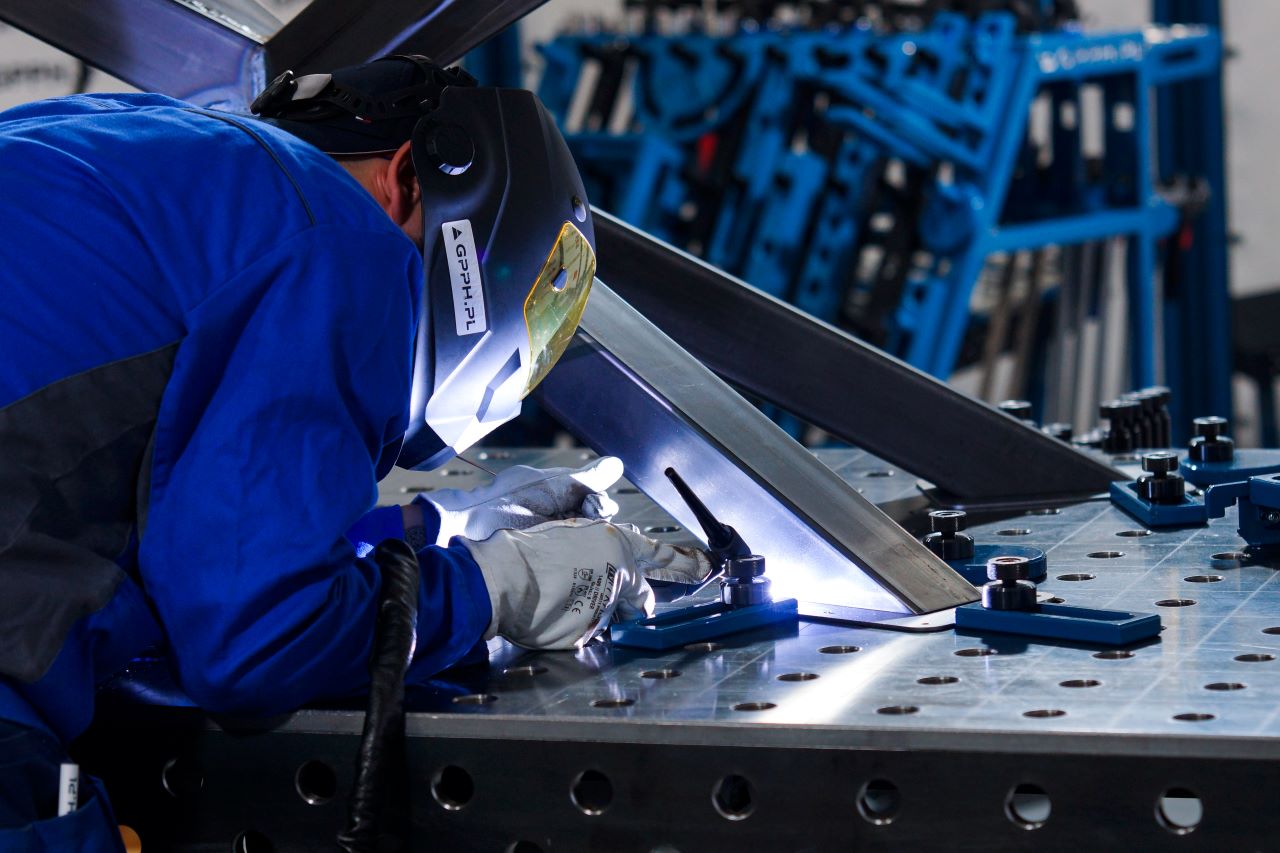Welding on a welding table requires attention to detail and proper preparation to ensure efficient and high-quality welds. This article provides practical advice on preparing the welding table, selecting materials and tools, and addressing common welding issues to achieve optimal results.
Preparing the Welding Table
Preparing the welding table is crucial for ensuring a stable and secure workspace:
- Cleanliness: Before starting any welding project, clean the welding table thoroughly to remove debris, oil, and any contaminants that could affect weld quality. A clean surface promotes better adhesion and reduces the risk of defects.
- Setup: Position the welding table in a well-ventilated area with adequate space for maneuvering and access to necessary utilities. Ensure the table is leveled and stable to prevent vibrations that could affect welding accuracy.
- Fixturing: Use appropriate fixtures and clamps to secure workpieces firmly in place on the welding table. Adjustable clamps and modular fixturing systems, such as those offered by GPPH Group, allow for precise alignment and support during welding operations. Explore GPPH Group’s premium welding tables here.
Materials and Tools Selection
Selecting the right materials and tools is essential for achieving successful welds:
- Material Compatibility: Choose welding materials that are compatible with the base metals being joined. Ensure the filler metal matches the base metal’s properties to maintain strength and integrity in the weld.
- Welding Machine Settings: Adjust welding machine settings, such as voltage, amperage, and wire feed speed, according to the material thickness and welding position. Proper settings prevent overheating and ensure consistent weld penetration.
- Personal Protective Equipment (PPE): Always wear appropriate PPE, including welding helmets, gloves, and protective clothing, to protect against sparks, UV radiation, and welding fumes.
Addressing Common Welding Issues
Despite careful preparation, welders may encounter common issues during welding on a welding table:
- Weld Spatter: Minimize weld spatter by adjusting the welding parameters and ensuring a clean work surface. Anti-spatter sprays or gels can also be used to reduce spatter buildup on the welding table.
- Distortion: Prevent distortion in the workpiece by controlling heat input and using clamps strategically to minimize movement during welding. Preheating thick materials can help reduce stress and distortion.
- Porosity: Address porosity issues by ensuring proper gas coverage (for MIG and TIG welding) and using clean filler metals. Avoid welding in windy conditions that can disrupt shielding gas flow.
Conclusion
Mastering the art of welding on a welding table involves meticulous preparation, the right tools, and proactive problem-solving. Investing in high-quality welding tables, such as those manufactured by GPPH Group, provides reliability and precision for diverse welding applications. Visit GPPH Group’s website to explore their range of innovative welding solutions and enhance your welding capabilities.
By following these practical tips and leveraging quality equipment, welders can consistently achieve high-quality welds on welding tables, contributing to efficiency and excellence in industrial welding operations.

